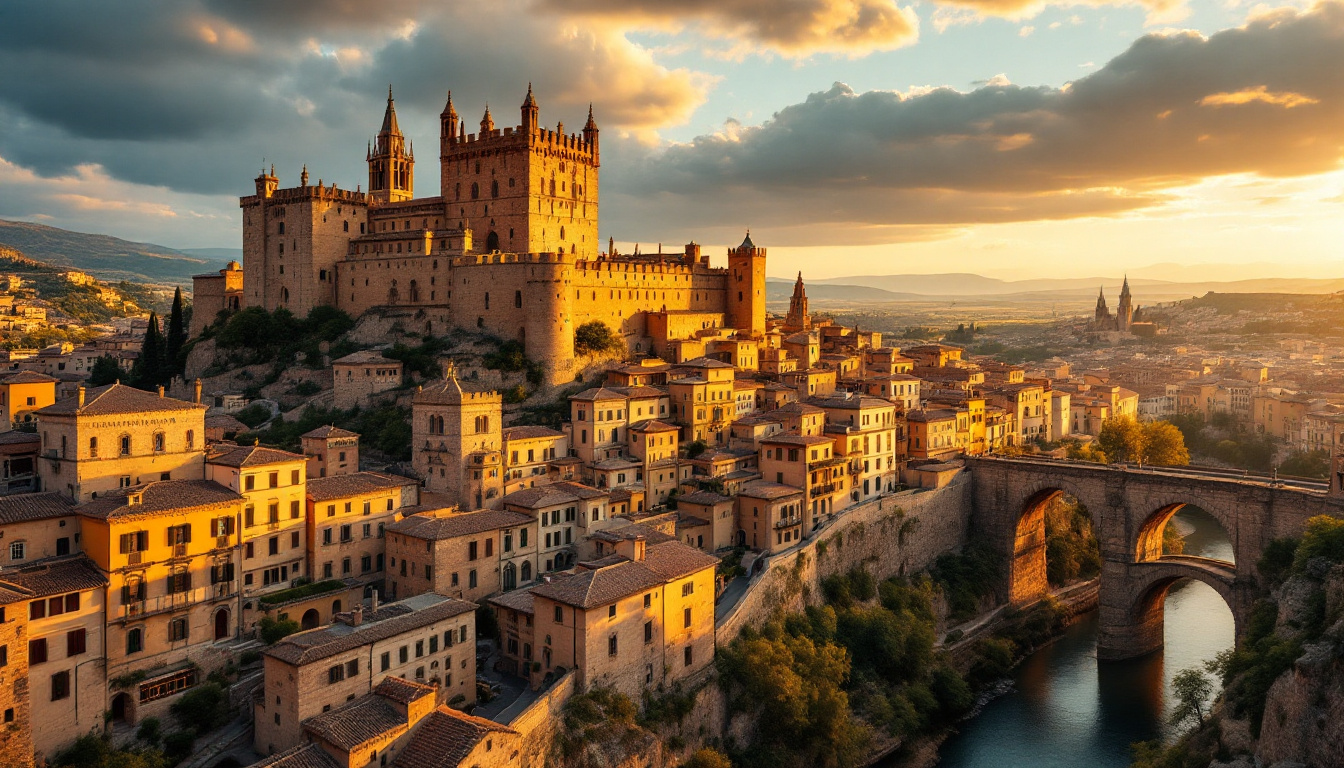Valderrobres: Spain’s Medieval Masterpiece Hidden in Aragon’s Countryside
Spain’s Teruel province harbors an extraordinary secret. While travelers flock to Barcelona and Seville, the medieval town of Valderrobres stands frozen in time—a Gothic wonderland of honey-colored stone that transports visitors to Spain’s storied past. This architectural gem, with its imposing castle crowning a hillside of winding cobblestone streets, delivers an authentic Spanish experience that mass tourism hasn’t discovered.
A perfectly preserved medieval treasure
Declared a Historic Site, Valderrobres showcases some of Spain’s finest Gothic architecture. The town cascades down a rocky hillside from its 12th-century castle to the gentle Matarraña River below, creating a dramatic medieval silhouette against the Aragonese sky.
“Our town represents seven centuries of continuous history written in stone,” explains María Fernández, local historian. “Every corner tells a story about the people who shaped this region.”
Labyrinth of medieval streets
Narrow cobbled pathways wind through the old town, revealing hidden plazas and flower-draped balconies. The Gothic labyrinth creates an intimate atmosphere where time seems suspended. Don’t miss Portal de San Roc, the ancient gate marking the historic center’s entrance, where medieval defenders once stood guard against invaders.
Castle and church: twin Gothic marvels
The 14th-century Castle of Valderrobres dominates the skyline, its crenellated walls visible for miles. Next door, the Church of San Juan Bautista exemplifies Aragonese Gothic style with its dramatic rose windows and flying buttresses. Together, they form one of Spain’s most impressive architectural ensembles outside major tourist centers.
The stone bridge: a portal to the past
The medieval Puente de Piedra spans the Matarraña River with five perfect arches dating to 1390. This ancient crossing offers spectacular views of the riverside town, especially at sunset when golden light bathes the honey-colored stone. Like France’s perfectly preserved medieval wonders, Valderrobres maintains its authentic character without succumbing to commercial tourism.
Plaza España: heart of local life
The main square serves as the social hub where generations of residents have gathered. Surrounded by Renaissance architecture including the impressive 16th-century Casa Consistorial (Town Hall), the plaza offers the perfect setting to sample local cuisine while watching daily life unfold.
“In Valderrobres, we don’t just preserve buildings—we preserve our way of life,” says Antonio López, town councilor. “Our festivals, food, and traditions remain largely unchanged for centuries.”
Matarraña region: Spain’s Tuscany
The surrounding countryside rivals Mediterranean paradises with its rolling hills covered in olive groves and almond orchards. The climate offers perfect conditions for outdoor exploration, with temperatures similar to French coastal areas that maintain ideal weather when other regions swelter.
Culinary traditions worth traveling for
Aragonese cuisine shines in Valderrobres, focused on locally-sourced ingredients. Specialties include succulent roasted lamb, butifarra sausages, and Teruel ham. Don’t leave without trying hojuelas (honey-glazed donuts) and mostillo (nut and grape must pastry)—sweet treasures passed down through generations.
Rich cultural heritage beyond architecture
Like Mediterranean islands that preserve multiple civilizations, Valderrobres maintains rich traditions, particularly during Semana Santa (Holy Week). Local drumming processions reflect ancient rituals, while annual festivals celebrate customs involving bonfires, animal blessings, and communal gatherings.
When to visit this hidden gem
Spring (April-May) and autumn (September-October) offer ideal conditions with mild temperatures and fewer visitors. Summer provides warmest weather though temperatures can reach the mid-90s°F. The town remains relatively undiscovered compared to other European destinations, allowing for authentic experiences year-round.
Valderrobres delivers what sophisticated travelers increasingly seek: an untouched destination where history breathes through ancient stones, local traditions thrive, and visitors can experience the authentic Spain that exists beyond crowded tourist circuits. Here, medieval Spain isn’t recreated—it simply never disappeared.
